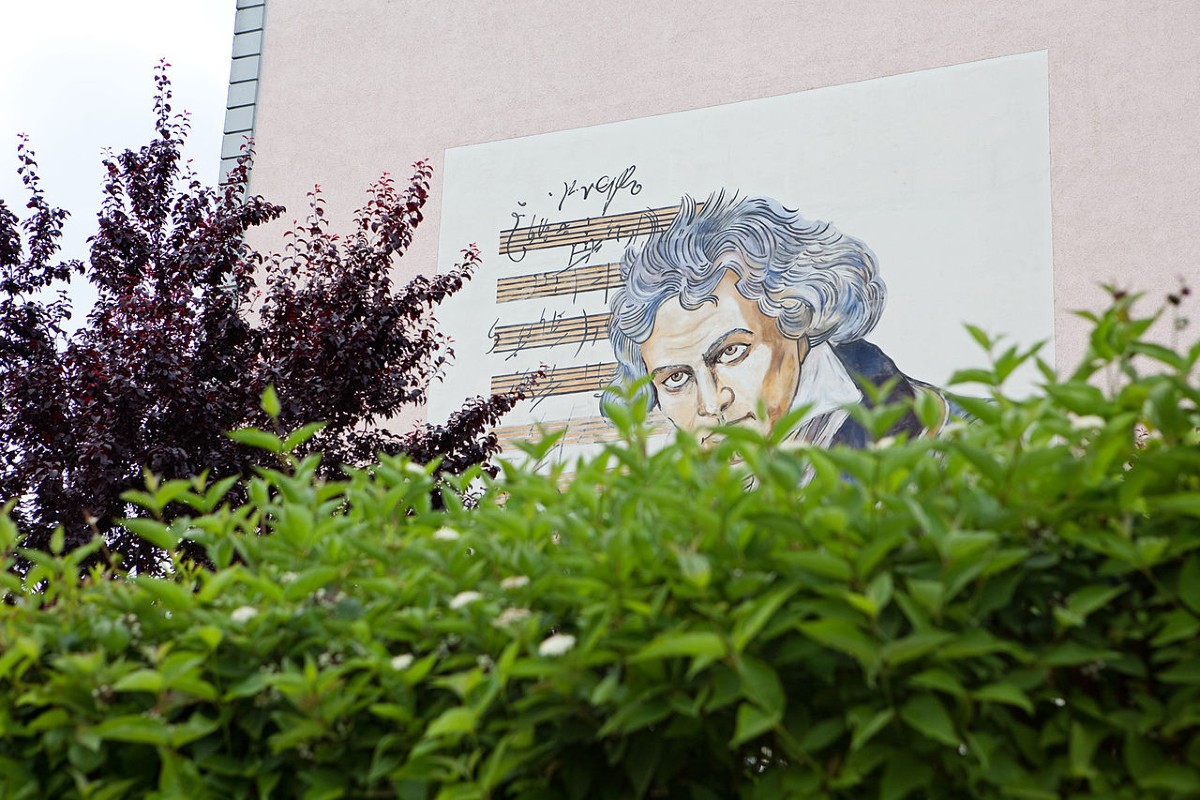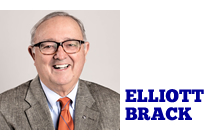
Mural painting of Beethoven on a wall in Beethovenstraße (Beethoven Street) in Leinefelde, Germany. Image via Wikipedia.
By Elliott Brack
Editor and Publisher, GwinnettForum
DEC. 15, 2020 | The Bibb County Board of Education is heavily responsible for my early love of classical music. Back when I was in grammar school, the Macon school system employed a person to travel to its elementary schools with her small 78 rpm record player, and give the students a lesson in “music appreciation.”
 That teacher was Henrietta Collins, and she came perhaps about once a month to play records of the classics for us untutored (in music) students. I particularly remember a time in the Sixth Grade, when she presented a work of Joseph Haydn, his Symphony 94, the second movement, which we were somewhat excited to hear called the “Surprise Symphony.”
That teacher was Henrietta Collins, and she came perhaps about once a month to play records of the classics for us untutored (in music) students. I particularly remember a time in the Sixth Grade, when she presented a work of Joseph Haydn, his Symphony 94, the second movement, which we were somewhat excited to hear called the “Surprise Symphony.”
Yep, that sudden loud moment in this symphony certainly surprised us! What a teaching moment that was, remembered to this day!
The other entity I’m indebted to for classical music came years later, when moving to Gwinnett County in 1974. Soon I found on the FM dial 90.1, WABE-FM, which in those times played classical music during its daytime hours. As I drove around Gwinnett, I listened to a wider array of classical composers, giving me renewed interest in music by the masters, Tchaikovsky, Brahms, Haydn, Rossini, Mozart, Handel, Chopin and many others. (Ah, thank goodness for the Long Ranger series, who used Rossini to give young kids a taste of classical music!)
Through the years, my favorite classical composer is Ludwig Beethoven. This week we mark the 250th anniversary of his birth. Some believe he was born Dec. 16, 1770 in Bonn, Germany, but no one knows the exact date for sure. It was the custom, however, to baptize children on the day after their birth, and we know that date: December 17. So Beethoven may have been born on the 16th.
He’s known for lots of beautiful music. Years ago, we bought an album of all nine of his symphonies by the Dresden Symphony, which we have often enjoyed. We like the Third and Fifth Symphonies in particular, but our favorite is the Ninth, with the robust accompaniment of a chorus. Beethoven originally scored the Ninth for 82 orchestra members, and a chorus of 80 singers. It is his only symphony where he employs a chorus.
Our favorite Ninth Symphony performance is the concert in Berlin conducted by Leonard Bernstein after the fall of the Berlin Wall on Dec. 26, 1989. Bernstein substituted the German word “freude” (“joy” in English) which Beethoven wrote, for the word “freiheit,” or “freedom” in commemoration of the fall of the wall. That brought down the packed audience when it was heard.
No matter when I hear Beethoven’s Ninth, it is a moving piece of music, with the chorus only heard in the fourth and final movement of the symphony. It still sends chills up my back as the orchestra builds to its finale. It was first given to an audience on May 7, 1924 in Vienna. Beethoven was age 53, and had not completed a major work in 10 years, and of course, by then was stone deaf. What a pity! He would die four years later.
The Ninth Symphony sets to music Friedric Schiller’s “Ode to Joy,” calling for peace and unity in the chorus’ rousing finale. That day in 1989, it was a perfect ending to that Berlin concert, particularly for East Germans, who joyfully felt the freedom after years of being sealed behind a useless wall.
Ludwig Beethoven, (1770-1827): thank you. May you rest in peace and in heaven be able to hear the great music you so beautifully composed.
- Have a comment? Send to: elliott@brack.net









Follow Us